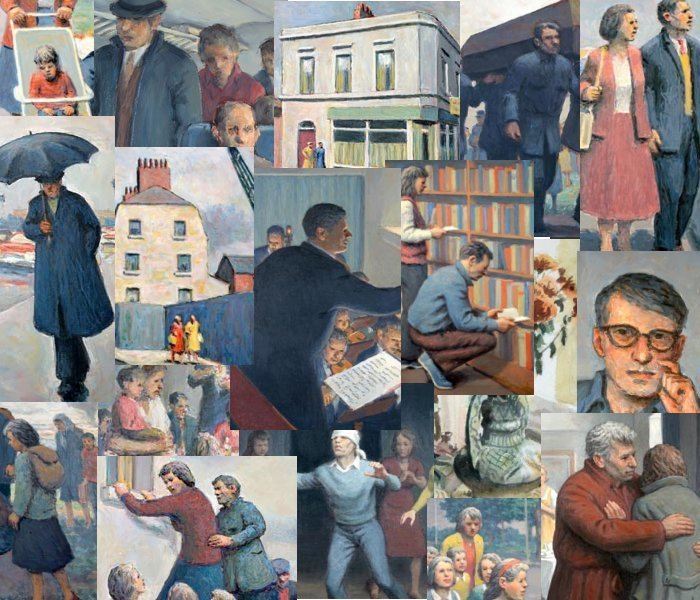Name Fermin Rocker | ||
 | ||
Died October 18, 2004, London, United Kingdom | ||
Fermin Rocker discussion part three Ben Uri art museum
Fermin Rocker (December 22, 1907 – October 18, 2004) was a British painter and book illustrator. He was the son of the anarcho-syndicalist theorists and activists Rudolf Rocker, a German, who had moved to London 1895, and Milly Witkop, a Ukrainian Jew, who had fled to the city in 1894.

Rocker was born in Stepney, London in 1907. He was named after the Spanish anarchist and mayor of Cádiz Fermín Salvochea. During his youth, he got to know many prominent anarchists such as Errico Malatesta and Peter Kropotkin and often attended anarchist meetings with his father. Later he would also meet Augustin Souchy, Emma Goldman, Alexander Berkman, Erich Mühsam, Nestor Machno, and Buenaventura Durruti. During this period he also started learning to draw from his half-brother Rudolph and exhibited great talent.
After World War I broke out, both his parents were arrested because of their anarchist activities, his father in 1914, his mother in 1916. In 1918, they were both released and extradited to the Netherlands, from where they moved to Berlin. There, Fermin Rocker was educated as a lithographer. His early works consisted in sketches, watercolor paintings, and graphic works. He also started mixing with the artist milieu in Berlin.
In 1929, Rocker followed his father on a lecture tour in the United States. Contrary to his original plans, he remained in New York. After the Machtergreifung in 1933, his parents joined him there.He worked as draftsman, a cartoon animator, a commercial artist, and as a book illustrator. Among his employers was the Survey Graphic. In 1944, he had his first one-man exhibition in New York. His works would also be exhibited at the Brooklyn Museum of Art, the Whitney Museum, and the Chicago Art Institute. The Library of Congress bought some works of his. In 1946, he received a prize from the Philadelphia Print Club for his graphical works. In 1952, he married Ruth Robins, a dentist from California he had gotten to know in New York. In the same year, his mother died; three years later his father followed.
In 1956, he visited the United Kingdom for the first time since he left Europe in 1929. His wife liked the continent so much that she returned to England in 1970. The couple then moved back to London, because of the crime and expensive rent in New York in addition to the fact that Rocker thought New York had gotten uglier over the years. In London, he illustrated books for the Oxford University Press and did paintings on the side. Once, Mick Jagger even bought a painting for ₤4,000 from him. It depicted Basque refugees fleeing Franco's allies towards the French border.
Influenced by realism, Rocker had done mostly landscape paintings with warm colors up to this point. They were rarely political. Since his move to New York he had mostly concentrated on oil paintings. But once in London, his style shifted slightly. He started painting everyday things, even political paintings such as the one he sold to Jagger. The colors he used got darker and sadder. Rocker's relationship to anarchism was ambiguous. He was turned off by the feuds within anarchism and acknowledged that capitalism had raised the standard of living.
After Rocker turned 65, he quit illustrating and concentrated on painting instead. He had 13 solo exhibitions in the last twenty years of his life, mostly at Stephen Bartley Gallery. In 1989, his wife died. He published an account of his childhood in London under the name The East End Years in the anarchist Freedom Press in 1998. He died in 2004.
